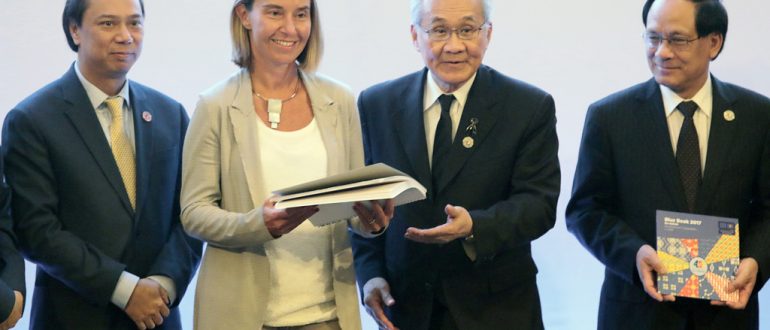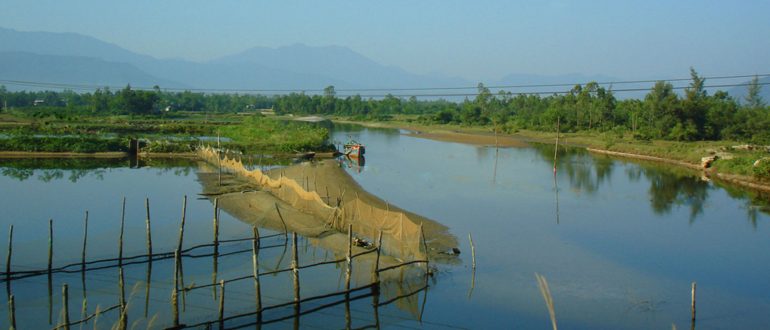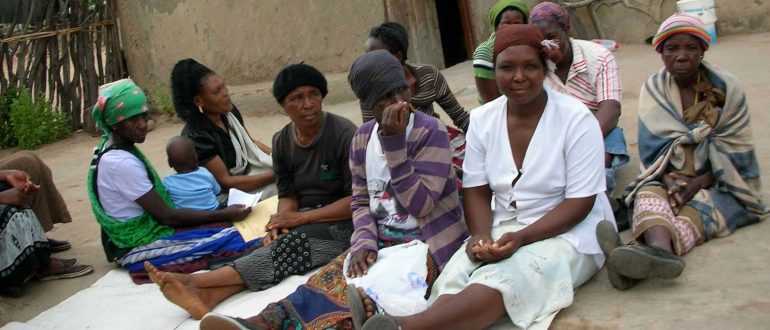Impeding innovation or establishing exploitation? The question of subsidizing microcredit
Abstract
Microcredit bears the promise of financial sustainability, implying a quick outreach to billions of potential customers – the poor of developing countries. Proponents of financial sustainability argue that the widespread subsidization in the industry is hampering this spread, proponents of subsidies oftentimes fear high interest rates in financially sustainable institutions. In answering the question whether subsidies are a viable strategy, not only the direct pros (e.g. questions concerning the start-up costs of microfinance organizations and customers) and cons (e.g. intra-organization arguments concerning efficiency) have to be considered, but also externalities of the respective approach – concerning the competitiveness of the industry as well as social capital and the like. This article will argue that the context-dependence of microcredit-programs will always call for a coexistence of approaches – especially as institutions aiming at break even cannot be expected to target the poorest.
1. Introduction
The Nobel Peace Prize 2006 to Mohammed Yunus refocused attention to the fact that “[p]overty is a threat to peace”[1]. The price lauded an approach of help to self-help with the promising side-effect of long term financial sustainability and increased capacity of financial markets: Microcredit – a seemingly hyper-efficient tool for poverty alleviation.
The concept builds on the large unused potential of poor households. From an economic point of view their marginal return to additional capital is not only theoretically very high, as a consequence of the ‘law of diminishing marginal product’, it can as well empirically be shown to be substantial[2]. At the same time, low capital supply for the poor hints to market failures in the capital markets of developing countries.
But Microcredit is no homogenous approach, despite numerous best practice dissemination projects[3]. As Cull[4] notes, the great divide in microcredit stems from an approach rooted in poverty alleviation versus an approach rooted in profit making. The question therefore is, whether the credit aspect is primarily a mean to increase the leverage of the single original dollar – relending it for numerous times means a much larger outreach with a given amount of aid money – or whether it is mainly a business – with high interest rates promising profit while serving a social mission as well.
A central question in this divide is the question of subsidies: They imply an intervention potentially disrupting market efficiency. This is viewed with suspicion, as examples of sustainable institutions are fuelling the ‘market-led-only’ proponents and behind the emotional background of the fierce debate around subsidized rural development banks in the 1970s. Those banks should in theory have rapidly developed third world countries’ agricultural sector by cheap credit. But the plan of externally induced rapid capitalization failed “to adequately account for the incentive effects and politics associated with subsidies. Subsidizing banks [only created] monopolies [while] removing market tests.”[5] Amin et. al.[6] similarly outline, how “[s]ubsidized credit has a disappointing history of being politically manipulated and diverted from its intended beneficiaries”.
2. Core Arguments
a) The question of high interest rates
Proponents of a free market, in following orthodox theory, see great benefits with a non-subsidy dependent microfinance industry. The problem of limited resources leads to their most attractive argument: Without reliance on capital input by Western donors, the number of people served by the programs – their outreach – can multiply. Of the 60 billion US$ currently invested in the microcredit industry around the world, roughly 100 million borrowers profit – against a potential of one billion customers. As prime example for financial sustainability serves the Mexican microfinance institution BancoCompartamos: Its stock value rose from US$ 6 million in 2000 to US$ 2.2 billion in 2007, attracting more than 400 million US$ in private capital, while at the same time expanding from 60 000 to 800 000 customers.[7] This apparent success story seemed to prove that private capital can be raised for sustainable microfinance, and thus for direct poverty alleviation. But the high profit margins, a consequence of interest rates of around 100%, at the same time created harsh critique, especially of authors using a ‘social mission’ of NGOs as benchmark for success.
High interest rates are not per se exploitative, though. The win-win-proposition promotes the assumption that the core problem is access to credit and not so much its price. Following the logic of utility maximizing individuals the mere acceptance of credit at high interest rates indicates this. From this perspective, a social mission seems an unnecessary supplement.
Unfortunately, care still has to be given to the height of interest as soon as external constraints are overruling the theory. Especially the poorest are left in dilemmas they cannot cope with adequately. In their livelihoods, already slight shocks lead to hunger and distress: If they sell the few assets they have, their productive capacity and thus income for the future will be lost. If they choose to keep their assets and hunger, their working capacity and thus future earnings still suffer. If they take loans at unfavorable conditions, their future spending capacity suffers as well – but this might seem the easiest choice if faced with the alternatives. Poor households can thus be forced into exploitative credit arrangements.
But this is exactly how their poverty is reproduced: through decreasing returns on their capital, preventing the material escape from poverty, and continuing dependency relationships to the money lending party, preventing social emancipation. One indicator for at least the material consequences is the increasing multiple indebtedness of poor households. This can be observed in Bangladesh: As unregulated microfinance institutions are competing for customers, more and more poor get virtually trapped in poverty.
Both lines of argument might be conciliated, though, by research that exploitative interest rates are not per se linked to financially sustainable institutions, as competition should in the medium term drive interest rates down – despite negative examples in this industry.[8]
b) The question of externalities
Linked to this argument are efficiency based arguments, as subsidies could hamper the innovative potential and cost cutting interest of institutions.
Donors seeking to increase the amount of poverty reduced per dollar have to find incentive mechanisms replacing the market – a difficult task, especially as rigorous self-evaluation is still uncommon amongst NGOs.
Additionally, the subsidized organizations are in aggregate affecting the innovative potential of the whole financial sector via negative externalities, as they can compete with below-market interest rates. But this argument only holds if the respective credit market is approximating saturation – otherwise, the market-based institution can coexist peacefully with the subsidized ones.
The externalities argument can be turned around, though: “The social capital building aspects of an MFI need to be taken into account in the whole debate about the need for subsidy to run successful microfinance programs”[9]. Dowla argues that the group building processes of microcredit, serving a networking and community-building function, can generate social capital like trust, norms and networks, thus increasing the efficiency of society. This social capital will develop especially with development work supplementing the credit aspect. But financially sustainable institutions cannot be expected to weigh the cost-effectiveness of their individual project against its social impact on the whole society – the relative worth of public goods such as improved conflict management, better mediation of local resource allocation and, overall, the impact on constructing a sustainable community, must thus be calculated for the subsidization-question.
c) The question of start-up costs
Besides social externalities, proponents of subsidies have a last important argument on their side: Efficient financial institutions on rural credit markets of developing countries could not develop because of the presence of high start-up and transaction costs. Institutions usually need to establish a physical infrastructure and create trust for their work which can push interest above an affordable level. Even BancoCompartamos is an offspring of foreign donor money. This argument is even taken up by fierce advocates of a market solution:
Subsidies “could be justified only [if t]he positive effect of correcting a market failure […] will not be outweighed by political problems […, t]he poorest cannot be reached in a sustainable manner [and/or m]arket failures block the expansion of microfinance [Still, t]he interest rate of MFIs should never be subsidized.”[10]
But this argument of high start-up costs does not only exist for organizations but as well for subgroups of the poor themselves. It is important to disaggregate the poor – they are no homogenous group and have very different needs and capabilities. The poorest therefore might need a different approach than market-based microcredit. The idea is that these poor are so vulnerable that they cannot afford to invest in the future – as Wood[11] outlines, they live in a “Faustian bargain”. This bargain could be broken by programs involving an up-front subsidization of the beneficiary via nutritional support, skills training or even asset transfer to enable them to take part in conventional microcredit. A focus on financial sustainability runs the risk of only addressing the poor just below the poverty line. Consequently the depth of outreach in conventional institutions is rather low: Financially sustainable organizations are centered around congested urban areas where administrative costs are reduced through the close space and the infrastructure and business opportunities, which are of high quality. Rare are those financially viable organizations that actually work in remote areas, where the most disadvantaged of the poor live.
3. Conclusion
The question on subsidies cannot be answered universally – both sides have to adjust to the other side’s arguments. A subsidized projects needs to prove that its work is worth the money. But proponents of financial sustainability have to take public goods and the depth of their outreach into account. The dichotomy between those interested in the poverty impact compared to those focusing on self-sustainability is pointless: A poverty alleviation tool such as microcredit must not per se be judged against being self-sustainable or not – but only for being more efficient in alleviating poverty in a self-sustainable way compared to a mixed or subsidised mode. The consequence of difficult cost-benefit analysis cannot be the recourse to financial-sustainability only – as non-sustainable microcredit programs still can have a larger poverty reduction impact, especially in quality, compared to sustainable ones.
This calls for a disaggregation of approaches: As Ault and Spicer[12] argue it can only be the analysis of institutional as well as economic conditions that can lead to a viable decision on the question: “[O]ne microfinance model is unlikely to fit all contexts”.
Lukas Rudolph
Bibliography
Amin, Sajeda, Ashok S. Rai, and Giorgio Topa. “Does Microcredit Reach the Poor and Vulnerable? Evidence from Northern Bangladesh.” Journal of Development Economics 70, no. 1 (2003): 59-73.
Armendáriz, Beatriz, and Jonathan Morduch. The Economics of Microfinance. 2nd ed. Cambridge, Mass.: MIT Press, 2010.
Ault, Joshua K., and Andrew Spicer. “Does One Size Fit All in Microfinance? New Directions for Academic Research.” In Moving Beyond Storytelling : Emerging Research in Microfinance, edited by Todd A. Watkins and Karen M. Hicks, 271-84. Bingley: Emerald, 2009.
Banerjee, A. V., and E. Duflo. “Giving Credit Where It Is Due.” Journal of Economic Perspectives 24, no. 3 (2010): 61-79.
Cull, Robert, Asli Demirgüc-Kunt, and Jonathan Morduch. “Microfinance Meets the Market.” In Moving Beyond Storytelling : Emerging Research in Microfinance, edited by Todd A. Watkins and Karen M. Hicks, 1-30. Bingley: Emerald, 2009.
Dowla, Asif. “In Credit We Trust: Building Social Capital by Grameen Bank in Bangladesh.” Journal of Socio-Economics 35, no. 1 (2006): 102-22.
Gulli, Hege. Microfinance and Poverty : Questioning the Conventional Wisdom. Washington, D.C.: Inter-American Development Bank, 1998.
Handler, Nils. “Bitte Nicht Spenden!” Der Freitag, 16.12.10 2010, 6-7.
Rosenberg, Richard, Adrian Gonzales, and Sushma Narain. “The New Moneylenders: Are the Poor Being Exploited by High Microcredit Interest Rates?” In Moving Beyond Storytelling : Emerging Research in Microfinance, edited by Todd A. Watkins and Karen M. Hicks, 145-82. Bingley: Emerald, 2009.
Wood, Geof. “Staying Secure, Staying Poor: The ‘Faustian Bargain.’.” World Development 31, no. 3 (2003): 455-71.
Yunus, Mohammed. “Nobel Lecture.” Stockholm 2006. http://nobelprize.org/nobel_prizes/peace/laureates/2006/yunus-lecture.html, 13.10.2010.
[1] Yunus 2006.
[2] Comp. for a first overview Banerjee and Duflo (2010) as well as Armendáriz and Morduch (2010).
[3] Comp. e.g. the World Bank affiliated Consultative Group to Assist The Poor (CGAP).
[4] Comp. Cull et. al. 2009.
[5] Armendáriz and Morduch 2010: 10f.
[6] Amin et. al. 2003: 59.
[7] Handler 2010: 6.
[8] Comp. e.g. Rosenberg et. al. 2009.
[9] Dowla 2006: 119.
[10] Gulli 1998: 44f., e.i.o.
[11] Wood 2003.
[12] Ault and Spicer 2009: 277.



